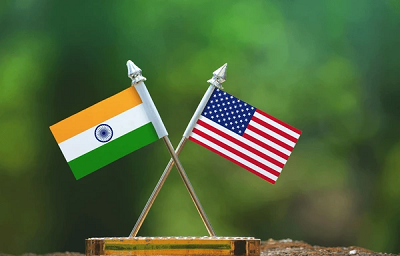Context
The strategic convergence between India and the US appears to be weakening due to several factors, primarily driven by the shifting focus of US foreign policy towards conflicts in the Middle East and Eurasia.
Key Issues Affecting the India-US Convergence
1. Assassination Attempt on Sikh Separatist:
○ The assassination attempt on a Sikh separatist in the US has strained India-US relations. This incident has led to tensions between intelligence agencies and highlights deeper structural issues rather than being the root cause of the divergence.
2. Focus on Common Threats:
○ Historically, the strategic convergence between India and the US has been driven by a shared perception of the threat posed by China. However, the more the US focuses on Russia or other adversaries and India focuses on Pakistan, the weaker their strategic convergence becomes.
3. US-Russia Dynamics:
○ The US focus on weakening Russia, particularly through the ongoing Russia-Ukraine conflict, indirectly affects India. Russia is a primary military supplier to India, and US sanctions or conflicts with Russia can disrupt this supply line, thereby impacting India’s defense preparedness, especially against China.
Shift in US Strategic Focus
1. Budget Priorities:
○ The significant allocation of US$61 billion for Ukraine compared to only US$8 billion for the Indo-Pacific indicates a strategic shift. This shift has led to a perceived neglect of the Indo-Pacific region, which is crucial for countering China and supporting India.
2. Middle East Conflicts:
○ The US involvement in the Middle East, such as in the Gaza conflict, further diverts attention and resources away from the Indo-Pacific, exacerbating the strategic divergence with India.
Potential Problems with the US Strategy
1. Lack of Endgame in Ukraine:
○ The US appears to have no clear plan for the resolution of the Ukraine conflict, leading to continuous aid with uncertain outcomes. This ongoing focus may continue to detract from addressing the China challenge effectively.
2. Emotional Response to Russia:
○ The US strategic community's intense focus on Russia, often at the expense of the China threat, parallels India's historical focus on Pakistan over China. This misplaced priority may undermine long-term strategic goals.
India's Role and US Expectations
1. India’s Limited Utility in Indo-Pacific Conflicts:
○ In a potential US-China conflict over Taiwan, India's direct military involvement is unlikely. However, India can still play a crucial role by keeping its forces alert on China’s southern border and cooperating on economic sanctions against China.
2. Economic Leverage:
○ India’s interest in reducing China's economic power aligns with US goals, but this cooperation does not require significant incentives from the US, reducing India's leverage.
Stagnation in India-US Relations
1. New Initiatives with Limited Impact:
○ While initiatives like the GE-HAL jet engine deal and the iCET are promising, their long-term success and the extent of technology transfer remain uncertain. Without strong strategic convergence, such initiatives may lack the necessary momentum.
2. Future Prospects:
○ Despite past achievements, the current trajectory suggests that India-US relations may hit a ceiling if the foundational strategic alignment continues to erode. Issues like the Khalistan threat can further complicate ties if not managed carefully.
Conclusion
The weakening strategic convergence between India and the US is a multifaceted issue influenced by shifting US priorities, the dynamics of US-Russia relations, and the varying focuses of both nations. To sustain and strengthen this partnership, it will be crucial for both countries to address these structural challenges and realign their strategic objectives, particularly in countering the common threat posed by China.
|
Probable Questions for UPSC Mains Exam
|
Source - The Hindu







